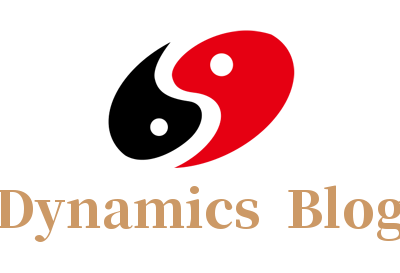Inflammation is a complex physiological response that plays a crucial role in both protective immunity and pathological conditions. Chronic inflammation is implicated in various diseases, including rheumatoid arthritis, cardiovascular disorders, and neurodegenerative conditions. S-Adenosyl-L-Methionine (SAMe) and its derivative, S-Adenosyl-L-Methionine Disulfate Tosylate (SAMe-DT), have been extensively studied for their anti-inflammatory properties. SAMe-DT is a stabilized form of SAMe, known for its superior bioavailability and biochemical stability, making it a potent therapeutic agent in inflammation-related disorders. In this blog post, as a high purity fine chemical raw materials exporter, SACH will share the anti-inflammatory properties of natural bioactive substance S-Adenosyl-L-methionine disulfate tosylate.
Effects of S-Adenosyl-L-Methionine Disulfate Tosylate in Inflammation
1. Modulation of Pro-Inflammatory Cytokines
SAMe-DT influences the synthesis of pro-inflammatory cytokines such as tumor necrosis factor-alpha (TNF-α), interleukin-1 beta (IL-1β), and interleukin-6 (IL-6). Studies have demonstrated that SAMe-DT reduces the activation of nuclear factor-kappa B (NF-κB), a key transcription factor involved in the expression of pro-inflammatory genes. By downregulating NF-κB signaling, SAMe-DT effectively suppresses the overproduction of inflammatory mediators.
2. Epigenetic Regulation via DNA Methylation
As a primary methyl donor, SAMe-DT plays a critical role in DNA methylation, which regulates gene expression, including genes involved in inflammation. Hypomethylation of promoter regions in inflammatory genes leads to their overexpression, contributing to chronic inflammation. SAMe-DT restores normal methylation patterns, thereby repressing the transcription of inflammatory genes and promoting homeostasis.
3. Regulation of Oxidative Stress
Inflammation is closely linked to oxidative stress, where reactive oxygen species (ROS) drive tissue damage and inflammatory responses. SAMe-DT enhances the activity of antioxidant enzymes, such as superoxide dismutase (SOD) and glutathione peroxidase (GPx), while reducing oxidative damage markers like malondialdehyde (MDA). By mitigating oxidative stress, SAMe-DT helps prevent inflammation-induced cellular damage.
4. Impact on Eicosanoid Pathways
Pro-inflammatory eicosanoids, such as prostaglandins (PGs) and leukotrienes (LTs), are synthesized from arachidonic acid via cyclooxygenase (COX) and lipoxygenase (LOX) pathways. SAMe-DT inhibits COX-2 and LOX activity, reducing the biosynthesis of pro-inflammatory mediators. This inhibition contributes to the attenuation of inflammation in conditions such as osteoarthritis and inflammatory bowel diseases.
5. Influence on Glutathione Metabolism
Glutathione (GSH) is a crucial intracellular antioxidant that modulates immune responses. SAMe-DT supports GSH synthesis by providing necessary methyl donors, leading to enhanced detoxification of inflammatory intermediates. A well-maintained glutathione system is essential for suppressing excessive inflammation and oxidative damage.

Applications of S-Adenosyl-L-Methionine Disulfate Tosylate in Inflammatory Diseases
1. Osteoarthritis (OA)
SAMe-DT has demonstrated significant efficacy in alleviating inflammation-driven cartilage degradation in osteoarthritis. Clinical trials have shown that SAMe-DT reduces pain and improves joint function by inhibiting inflammatory cytokines and oxidative stress in chondrocytes. Its effects are comparable to those of nonsteroidal anti-inflammatory drugs (NSAIDs), but with a superior safety profile.
2. Liver Inflammation and Hepatic Disorders
Hepatic inflammation, often driven by excessive alcohol consumption, viral infections, or metabolic disorders, results in liver damage and fibrosis. SAMe-DT enhances hepatic glutathione levels and attenuates inflammation by modulating cytokine expression. It has been found to be particularly beneficial in conditions such as non-alcoholic fatty liver disease (NAFLD) and alcoholic liver disease (ALD).
3. Neuroinflammation and Neurological Disorders
Chronic neuroinflammation is implicated in disorders like Alzheimer's disease, Parkinson' s disease, and depression. SAMe-DT exerts neuroprotective effects by modulating neuroinflammatory cytokines and oxidative stress in the central nervous system (CNS). It also supports methylation-dependent neurotransmitter synthesis, which is critical for cognitive and mood regulation.
4. Inflammatory Bowel Disease (IBD)
Inflammatory bowel diseases, including Crohn's disease and ulcerative colitis, are characterized by excessive immune activation and chronic inflammation in the gastrointestinal tract. SAMe-DT' s ability to restore epithelial integrity, reduce inflammatory mediators, and enhance glutathione-dependent detoxification makes it a promising adjunctive therapy in IBD management.
5. Cardiovascular Inflammation
Systemic inflammation is a major contributor to atherosclerosis and cardiovascular diseases. SAMe-DT reduces endothelial inflammation by modulating NF-κB signaling and lowering oxidative stress. It also plays a role in homocysteine metabolism, preventing hyperhomocysteinemia—a risk factor for cardiovascular complications.
Conclusion
S-Adenosyl-L-Methionine Disulfate Tosylate (SAMe-DT) represents a promising anti-inflammatory agent with multifaceted mechanisms of action. Its ability to modulate cytokine expression, oxidative stress, eicosanoid metabolism, and DNA methylation underscores its therapeutic potential in various inflammatory conditions. With superior bioavailability and safety compared to conventional anti-inflammatory drugs, SAMe-DT stands as a viable alternative for managing chronic inflammatory diseases while minimizing adverse effects.c
www.hzsqchem.com
SACH

